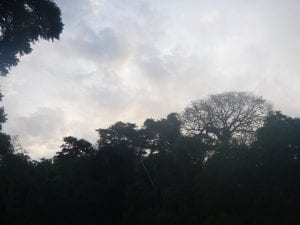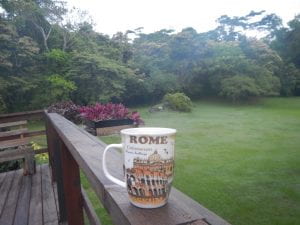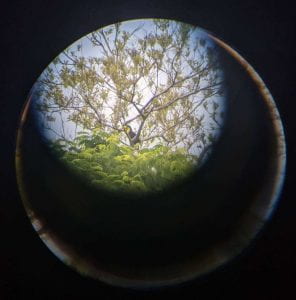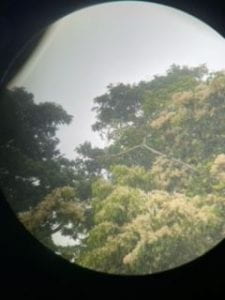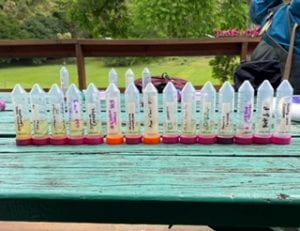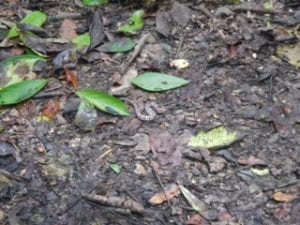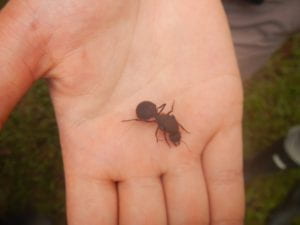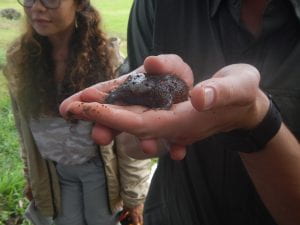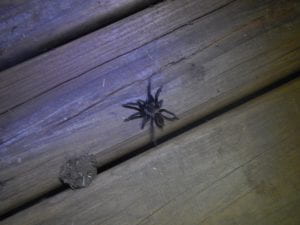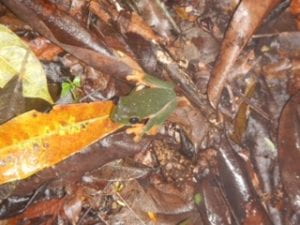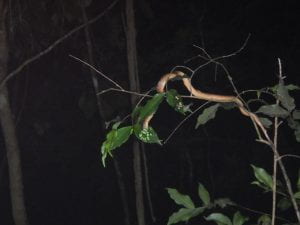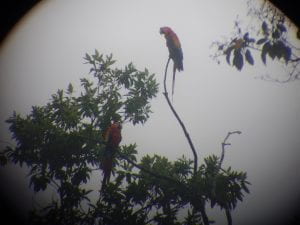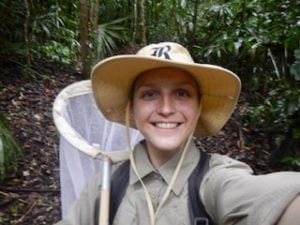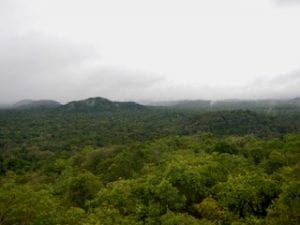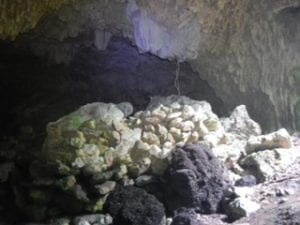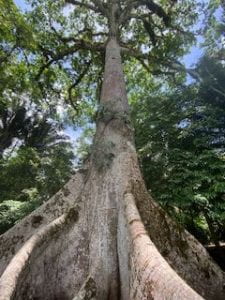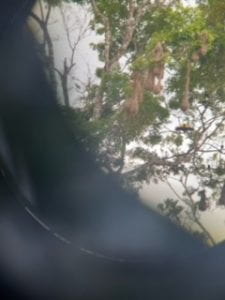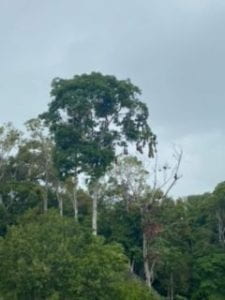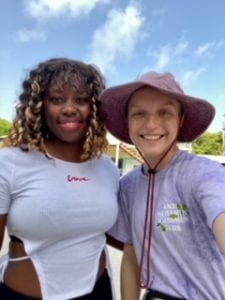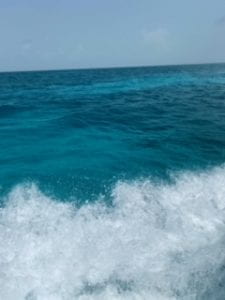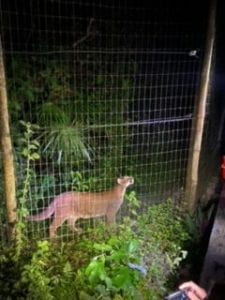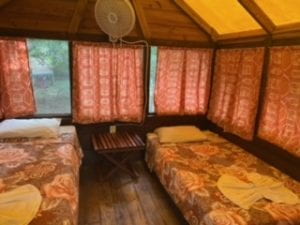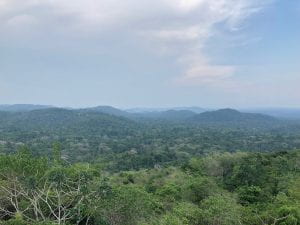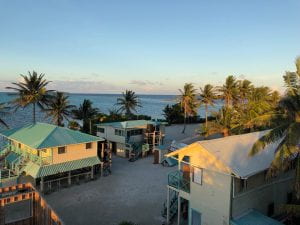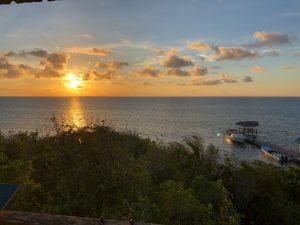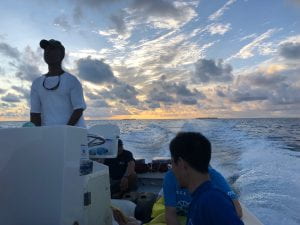Our day began with birding in the morning—and it did not disappoint. Within minutes, we saw a toucan showing off its enormous beak from the treetops. A red-crowned Amazon parrot soon followed, its call echoing through the canopy. The real showstopper, though, was a scarlet macaw soaring overhead, its vivid colors lighting up the sky. These species are not only beautiful—they’re also a vital part of the Chiquibul’s ecosystem and a major reason why this forest deserves protection.
After breakfast, we had a presentation from the head of Friends for Conservation and Development (FCD), the organization responsible for managing the Chiquibul Forest. He talked about the forest’s biodiversity, the illegal activities that threaten it, and the work being done to protect it. It was eye-opening to hear just how much effort goes into preserving a place like this—especially when it covers such a vast and remote area.
Following that, we learned more about one of the Chiquibul’s most fascinating features: its cave systems. The presentation covered how these caves form, what kinds of species live inside them (lots of bats!), and their cultural importance as ancient Maya ceremonial sites. It was amazing to realize how much life and history exists not just above ground, but also below it.
In the afternoon, we shifted gears for some fieldwork. Our group investigated fungi growth on leaf-cutter ant colonies, comparing younger and older colonies to see how fungal size varies with colony age. These ants farm fungi as their food source, so changes in the fungi can tell us a lot about colony development and forest dynamics. Watching the ants carry leaf pieces in single-file lines was like watching a tiny, efficient city at work.
From birds in the treetops to bats in the caves and ants underfoot, today offered a full-spectrum look at life in the Chiquibul. It’s wild, complex, and full of surprises—and I can’t wait to see what’s next.











